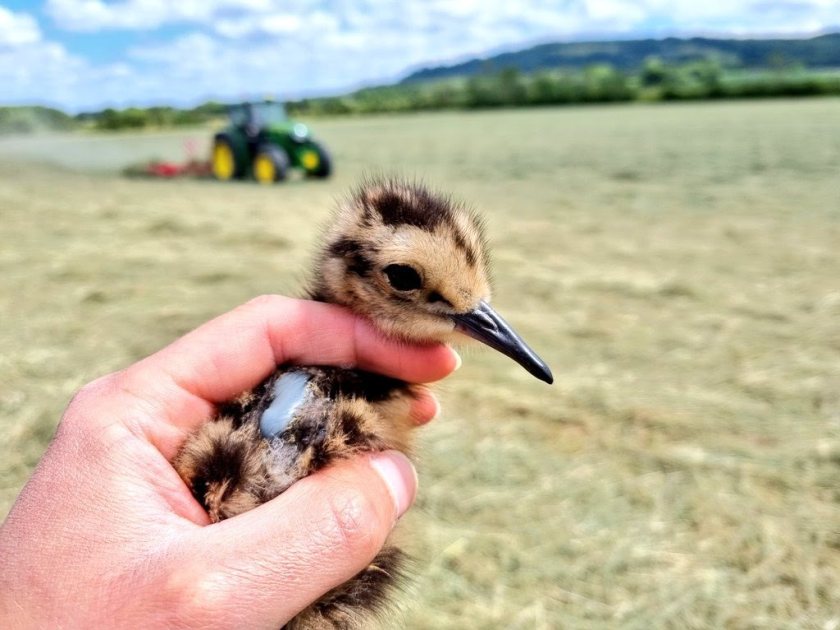
Farmers have joined forces with conservationists in the floodplain meadows of the Severn and Avon Vale to help save the curlew, one of the UK’s rarest wading birds.
The Flourishing Floodplains project aims to restore threatened wetland habitats in the farmed landscape of the Severn and Avon Vale.
With fears that the curlew won’t survive without intervention, the project is seen as important to inform protection work right across the country.
The project will run from 2022-2023 in partnership with the Wildfowl & Wetlands Trust (WWT), the Farming and Wildlife Advisory Group South West (FWAG) and the Floodplain Meadows Partnership.
Once a common sight and sound in the British countryside, curlews have become an increasingly rare - the number of breeding birds has dropped by 65% since 1970.
This year, researchers have found 18 nests – an improvement on previous years when numbers have been much lower.
The nests have been found with the help of local farmers, who alert the project team when they find eggs in their fields – and also change when they mow to avoid damaging eggs or newly hatched chicks.
Their roles as “guardians of the curlews” are seen as important to help protect these fast-declining waders.
As well as the direct curlew conservation work, an important part of the project is to understand the link between the extent of species rich floodplain meadows in the Vale and curlew nesting sites.
Floodplain meadows are rare and only 1,100 ha remain in the UK. The Severn Vale may contain more than 10% of the national resource, but restoring the species-rich meadows is essential to help the curlews who rely on the habitat to survive.
“This project could be called the “crème-de-la-crème” of curlew research work in the country thanks to the amount of resources we have put into it,” explained WWT senior research officer Kane Brides.
“The work includes catching the birds and ringing them so we can see where they go in the winter, whether they return to the same area to nest, and then exactly where their nests are.
"We can then monitor the eggs and chicks to try and understand better why so many of them aren’t surviving until they are old enough to fly.
He added: “The information we collect will then help inform efforts all over the country to save curlews – there’s a huge number of people right across the UK desperately trying to save these special birds."
“But we couldn’t do it without the help of the local farmers - the involvement of the farming community is an essential feature of the curlews’ success.”
Local farmer Dave Banwell, who farms in Hasfield, has joined the project. He said he was happy to do what he could.
“Curlews are having such a hard time, and have been for so long, anything we can do to help them we will.”
